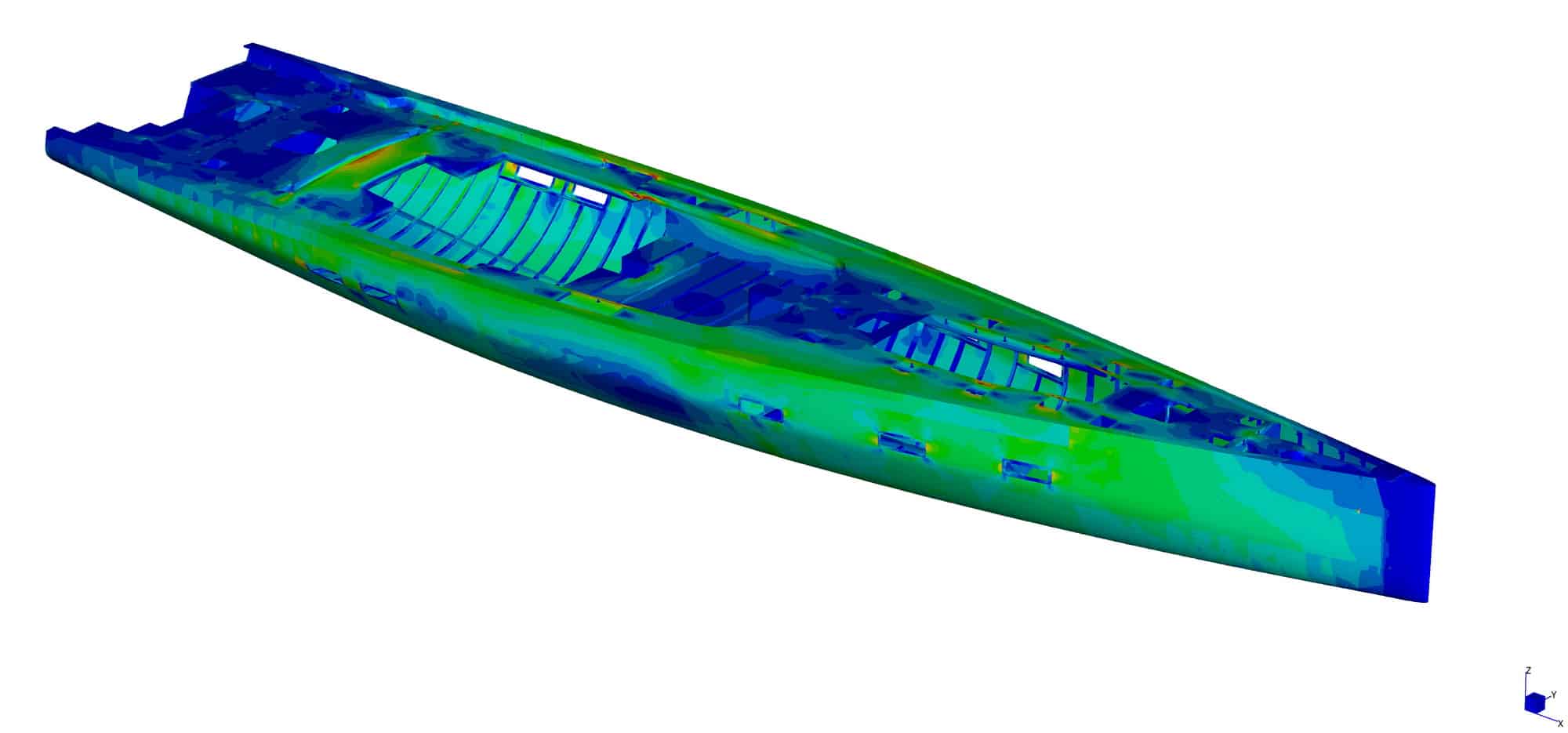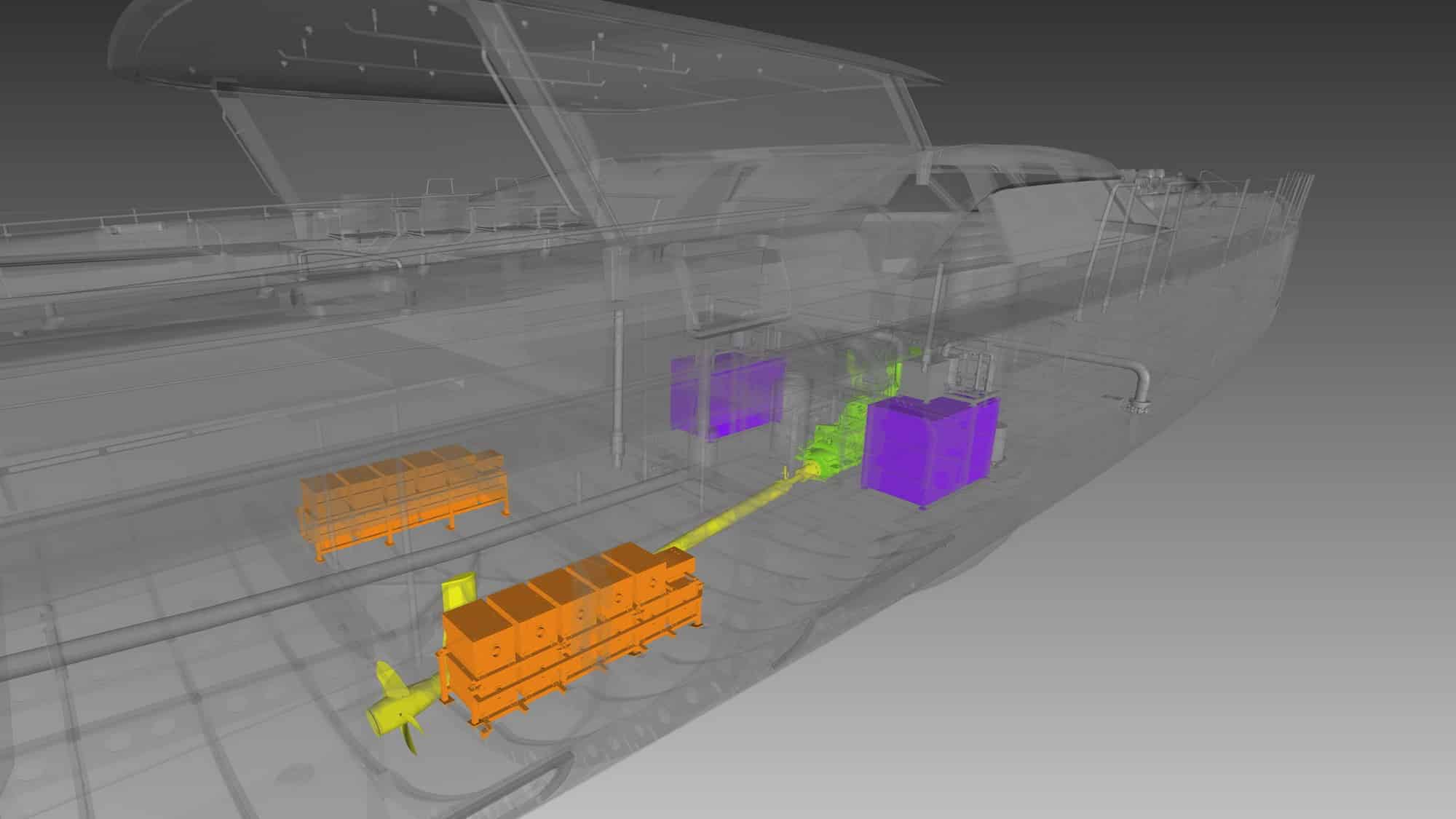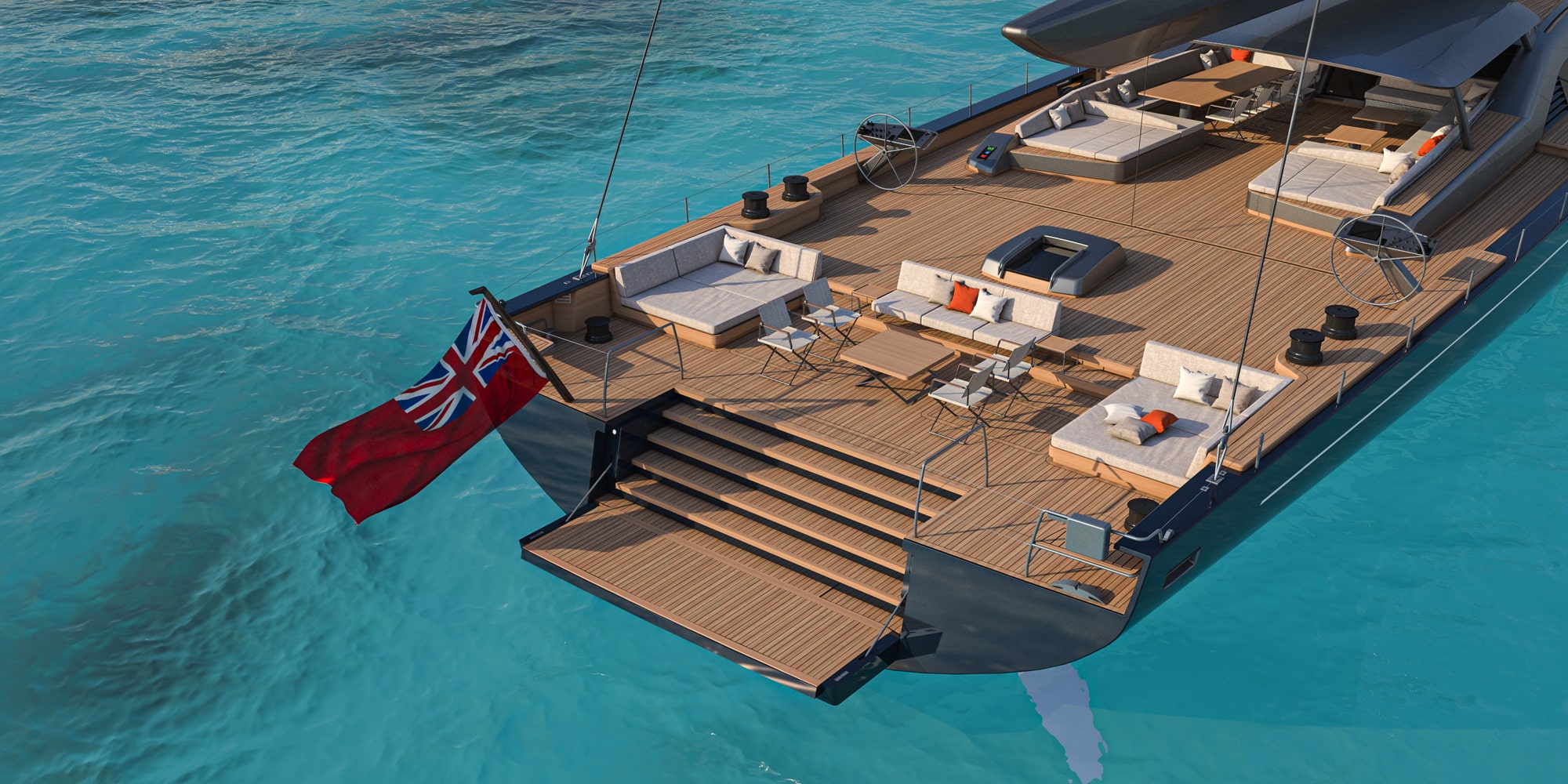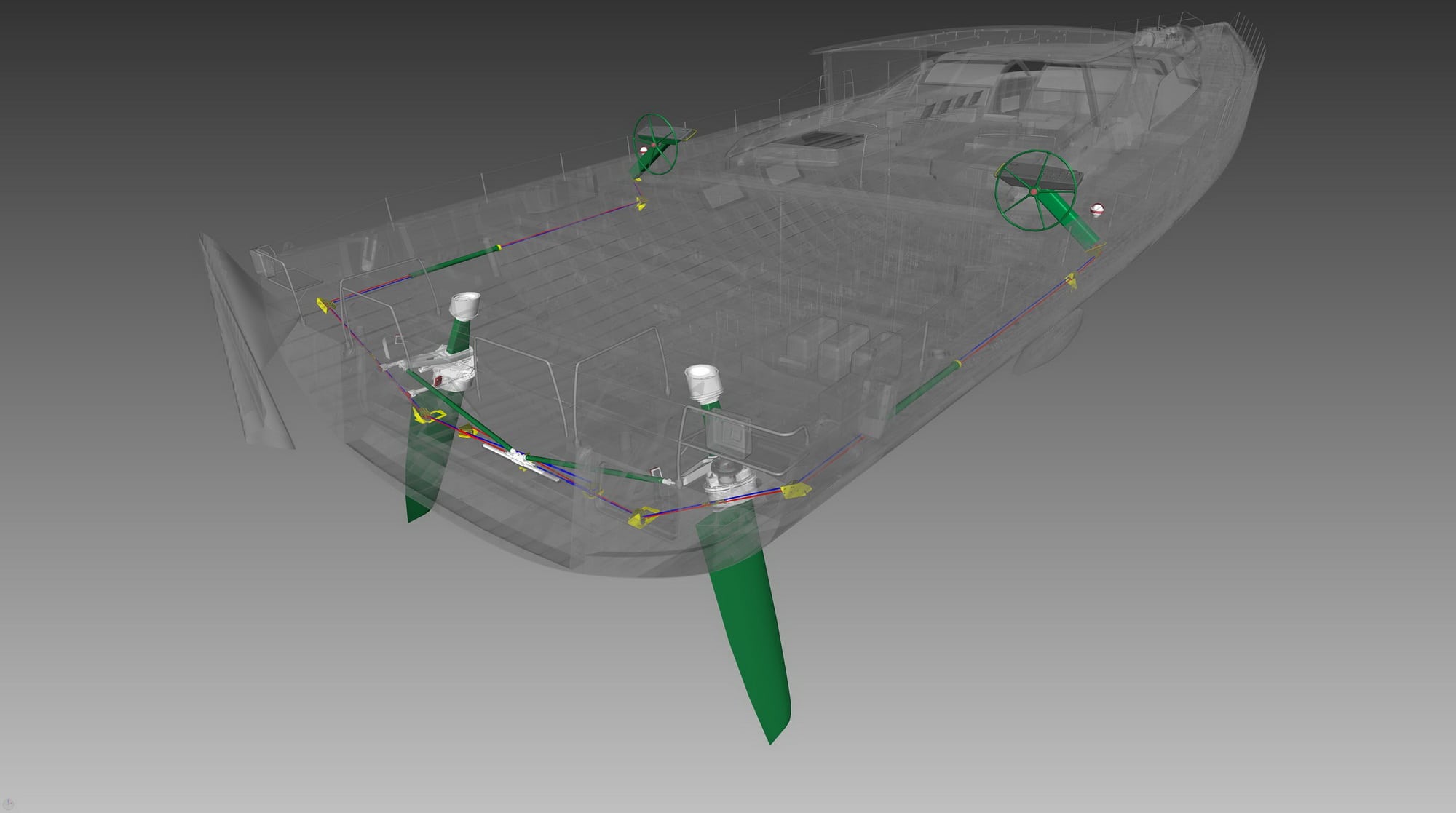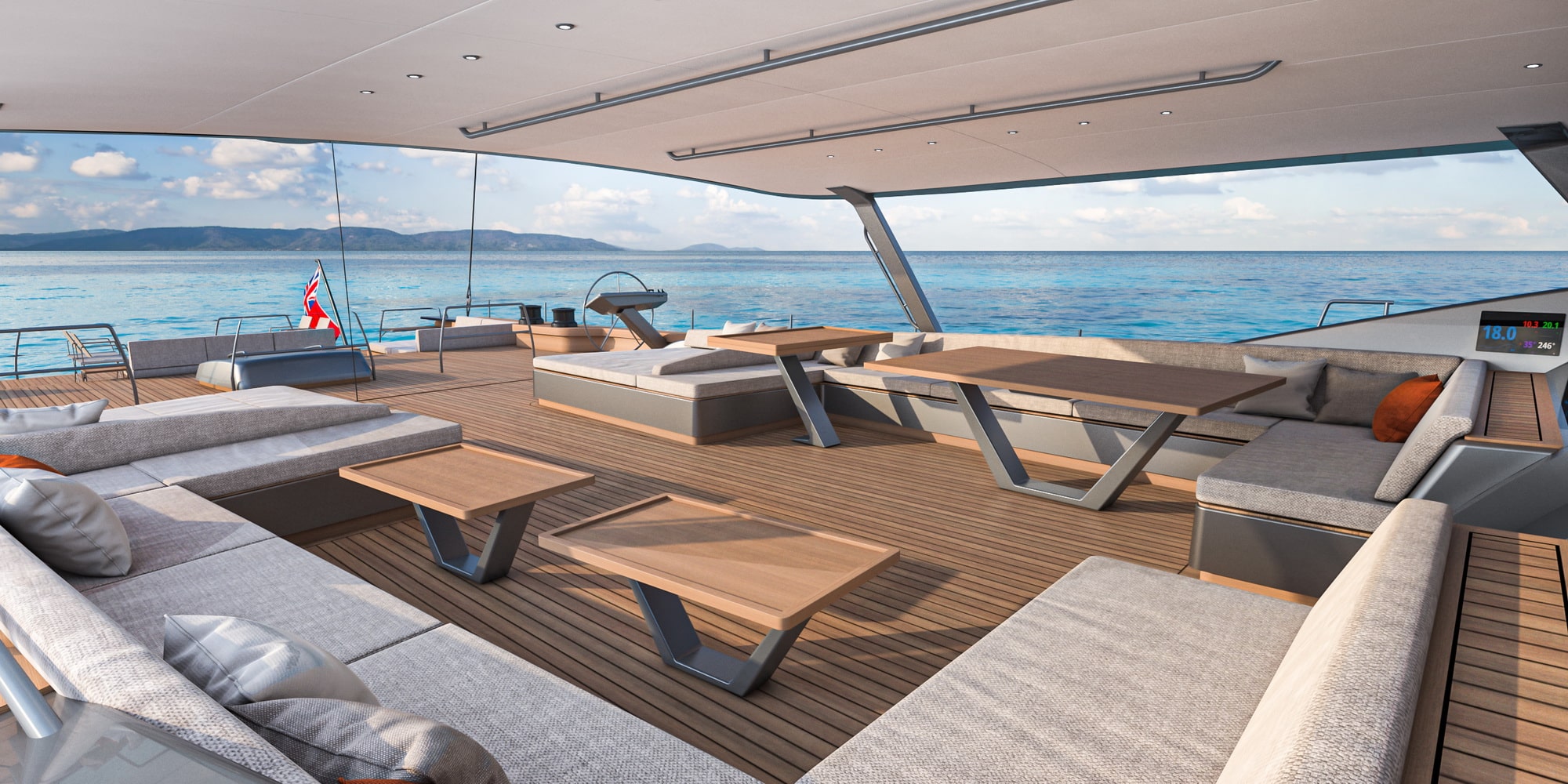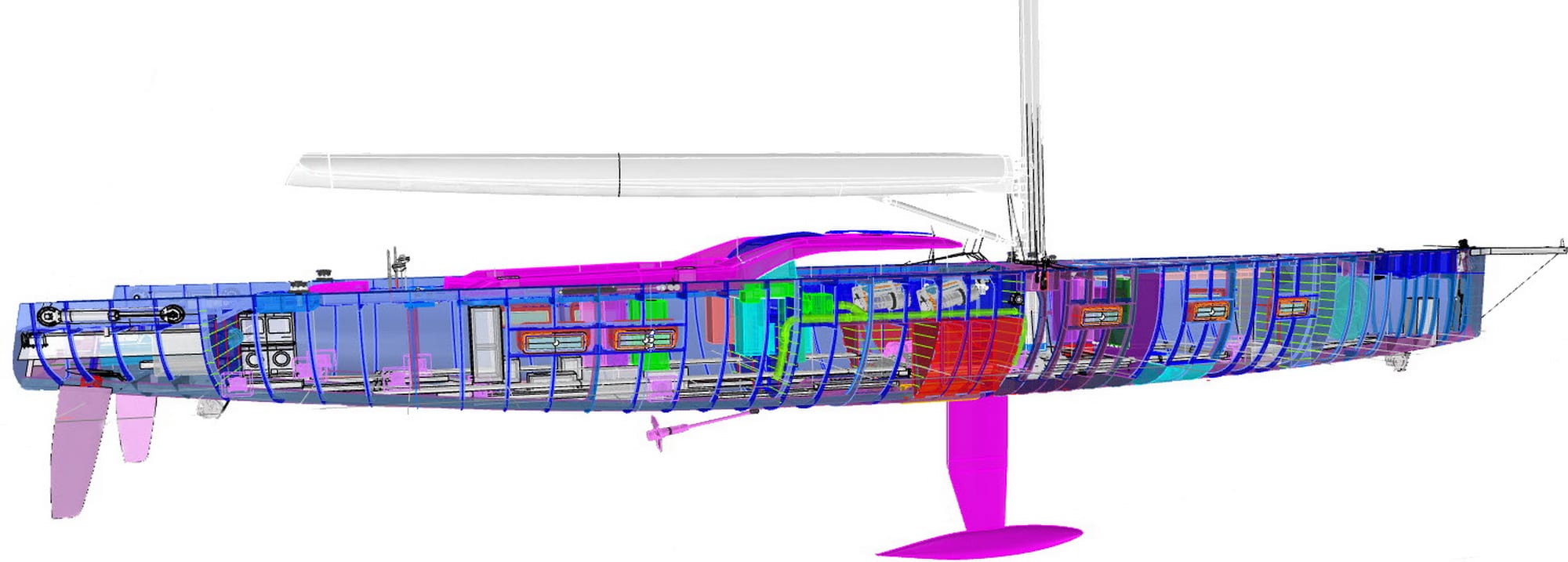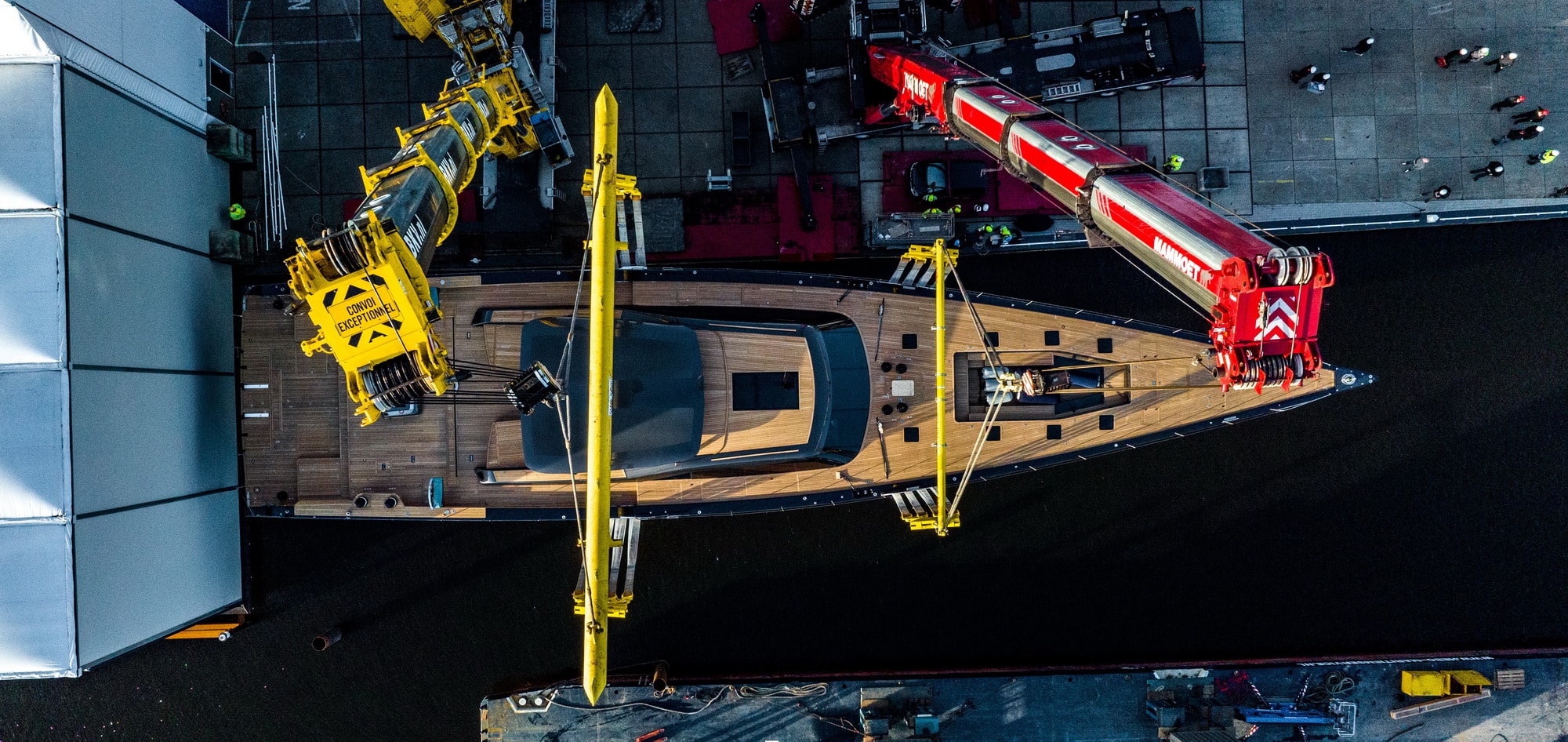Featherlight™ is an integrated, multi-disciplinary approach focusing on weight reduction through advanced construction technology as employed by the European Space Agency. Finite Element Method Strength Analysis and Parametric Modeling allows the builder to determine exactly the right thickness of construction material for any location to achieve the design parameters, in this case both Alustar aluminum alloy and composite. Alustar already has 20% more tensile strength than regular aluminum. In some structural areas, extra component stiffness is achieved not with more metal, but by gluing carbon fiber to aluminum utilizing the latest bonding techniques. In other areas, elements are joined by bonding, eliminating the added weight of fasteners. Royal Huisman developed its own parametric software tool to quickly evaluate various structural designs for weight, stiffness and strength.
AN INVESTMENT IN OUR DNA
AN INVESTMENT IN OUR DNA
8 MIN READ
…Featherlight™ method for this 46.8m / 154-foot sloop is not a single process or construction material, but a holistic light-weight method for delivering a global cruising yacht that will be completely at home competing in superyacht racing events.
“The Featherlight™ approach is an investment in our own DNA,” noted a spokesman for Royal Huisman’s engineering team. Continuous weight monitoring is an essential part of the Featherlight™ process, so much so that a dedicated weight engineer is allocated to each project to ensure meticulous processing from start to finish.
Rondal, too, plays a role in the Featherlight™ approach as the system integrator. Ensuring the optimization of all the carbon components, its own engineers also supported the process throughout. Working alongside the sailmaker and naval architect on mast and rig development is a logical and efficient process. For Nilaya, the methodology brought product innovations such as a runner arrangement that saves 1,200kg / 2,646lbs and a new generation hybrid captive winch that saved half the weight of previously available captive winches. Tapering to top of the mast on all four sides and eliminating a headboard lock in favor of a unique hook to capture and hold the mainsail are innovations that saved 150kg / 331lbs in a position that made a big positive impact on impact on the yacht’s center of gravity.
A new course for sailing superyachts
Following an agreed overall weight target, every department was given a weight budget. With integrated teams exploring all the elements of the boat concurrently, everyone was aware of how each decision impacted others. Suggestions for improvements could be shared and analyzed real-time.
Beyond sailing performance, another positive result of Featherlight™ means that the yacht needs less power for motoring, a factor that leaves more space to the interior accommodation.
In Nilaya’s case, the Royal Huisman team developed a ”tribrid” propulsion system in answer to the owners’ request for an emergency ‘get home’ engine. This flexible system provides three ways to power the variable pitch propellor without a supplemental third engine or gearbox, thus saving 2,000kg / 4,409lbs. Its battery pack has the added benefit of allowing the yacht to operate silently in no-carbon areas. Similarly, a critical look at the HVAC system and selecting direct expansion and fan coils for each room, shaved another 600kg / 1,323lbs from systems weight.
Challenging a myth
For exterior and interior designers Nauta Design, Nilaya represents the largest sailing yacht yet in its portfolio. While she may share some handsome profile characteristics with her 34m / 112ft Maxi Class racing predecessor, this 12m / 42ft longer yacht is designed for luxurious cruising, albeit with a good turn of speed.
“To combine the comfort and robustness to explore the world with the owner’s request for a lightweight yacht that would be responsive at the helm and competitive in superyacht regattas wasn’t an easy task.”
explains Nauta’s co-founder Mario Pedol:
“One option was to build in carbon fiber, which is lighter and generally faster than aluminum. On the other hand, aluminum is more comfortable and impact resistant. We asked ourselves a very simple question: could we design an aluminum yacht that was much closer in terms of displacement to an equivalent carbon boat? The answer was yes, following my intuition that hull and deck are only 15% of the total weight of a modern sailing yacht; this was backed by analysis of our most relevant projects from our designs. In this process we took into account the owners’ priorities, including less noise, the strength of the material, and the possibility of repairs around the world. We set about discovering ways to minimize the difference and look for advantages elsewhere,” he said.
“Royal Huisman supported this vision with enthusiasm
and accepted the challenge.”
Developing the deck and cockpit perfectly for the dual purposes of cruising with family and friends and regatta racing was very important to the owners, according to Pedol. “Royal Huisman constructed a 1:1 mock up of the entire aft half of the yacht for finetuning all the aspects from sail controls and steering pedestals to the dining table, seatback angles of sun loungers and the step to the aft deck leading to the swim platform. Checking sightlines over the coachroof from the helm positions received critical attention, even by simulating heeling angles.”
Building a blissful home on the sea
Nigel Ingram of MCM Newport is the owners’ representative for Project 405 as well as the owners’ previous Nilaya, which he describes as “a really happy boat.” That yacht won nearly every regatta she entered. “The owners wanted a powerful performer with easy-to-helm responsiveness; basically, all the good habits of the last boat, but with more comfort and less noise.” Nilaya, after all, means “blissful home” in Sanskrit.
Traditionally, reducing noise and vibration required the addition of weight — strictly the opposite of this desired outcome. To stay within the interior weight budget, Royal Huisman made extensive sound attenuation studies and developed sophisticated composite panels utilizing cork, foam, honeycomb and other materials. Accordingly, the shipyard made interior cabinets demonstrating the look, feel and sound of three levels of execution and allowed the owners to make the choice.
To perfect the hull shape, Reichel / Pugh Yacht Design enlisted the aid of one of the world’s best Computational Fluid Dynamics (CFD) consultants, Caponnetto Hueber, and Giorgio Provinciali, a team with two decades of America’s Cup experience. The top performing designs in both materials were made into models for tank testing. Beyond conventional CFD analysis, naval architect John Reichel explained that they layered on a sophisticated RANS code analysis to predict underwater turbulence generated by the hull, keel, rudders and propellors. It is the method used to optimize submarine hulls. Finally, the naval architects collected extensive wave data from the owners’ favorite windy cruising grounds and developed new hull shapes to run through the RANS CFD code to improve the seakeeping and motion characteristics of the yacht. As Reichel / Pugh improves the performance of their superyacht designs, they know it is critical to also improve the seakeeping characteristics in waves both under sail and power.
As the powerful sail plan was developing in concert with Rondal and Doyle Sails, running a Velocity Prediction Program (VPP) for the top designs showed that the yacht was shaping up to be an exceptional performer against top scorers in the maxi yacht fleet. The VPP predicts the yacht is capable of exceeding windspeed when reaching upwind with main and jib alone, even in a 10-knot breeze.
“The owner is a quality maniac,” said Nauta co-founder Massimo Gino. “Not only this hybrid use of the two materials but the approach to saving weight while keeping quality and comfort was a great solution for this project.” The choice of hull material did not alter the yacht’s interior design except as needed to adjust for framing dimensions, while the carbon composite coachroof preserved headroom.”
“By developing the complete interiors in 3D and consequently by producing hundreds high quality 3D rendered views, of both general views and details, in several different revisions and options, we were able to fulfill the owners’ expectations for light yet warm and welcoming interiors, which combine a modern look with classic elegance,” Gino added.
Throughout the year-long design process, the overall plan for the yacht changed little, Reichel said, except for becoming one meter longer, the length distributed mostly at the ends. “Weight distribution is critical for assuring comfortable motion on a cruising yacht. We gave the shipyard team a weight study early on, not just for the total but for balance and maintaining the proper center of gravity. “Royal Huisman responded with extensive Excel sheets showing the weight of every element. That’s a process typical of the highest end racing program construction.”
About Finite Element Analysis
Finite element analysis (FEA) is a complex mathematical geometric computation used for predicting how a part or an entire product will react under stresses such as load, force, heat, vibration, etc. Being able to look at a part in three dimensions also predicts how the part will react as the same stresses are being applied in its neighboring parts, thus identifying potential weak or vulnerable points that can be corrected in design. Think of it as a kind of digital prototyping but far more accurate and much faster. Solutions can be applied without having to build and test new physical models.
Royal Huisman used Finite Element Analysis (FEA) of Nilaya’s 3D model to fine-tune the engineering to “a much higher level,” according to naval architect Jim Pugh, adjusting plate thickness in the computer and predicting longitudinal stiffness or deflection without so much as touching that first piece of material. But it wasn’t just the engineering teams for carbon and aluminum structure that were involved. Royal Huisman created a new method of operation for Nilaya that kept all parties in the loop and working together from the outset.
“Bringing in the mast and sail designers early in the process has significant advantages,” said Jim Pugh. “From the aero CFD side, Rondal and the sail designers shared high quality data about sail forces and sail loads that we integrated into the hydro CFD studies of the candidate hulls. This markedly improved the quality of the CFD hull testing and the resultant performance prediction. The mast and sail loads were then input into the hull and deck’s structural engineering,” said Pugh. “These studies are applicable to any design whether Featherlight™ or heavy, no matter the thickness of the plate or weight of the composite, such a study will yield remarkable results.”
“The success of the innovations with Nilaya paves the way to use this bold new approach for future builds.”
Royal Huisman CEO Jan Timmerman
“I am proud of the investment we have made in advanced engineering and of the way teams from Royal Huisman and Rondal advanced new solutions to meet the brief from very knowledgeable clients and designers. The owners as well deserve congratulations for pushing everyone to achieve just a little bit more and for encouraging innovation at every step. Nilaya will be the world’s lightest aluminum sailing superyacht for her length: she rewrites the script for high-performance superyachts.”
Learn more about FeatherlightTM on this website: follow the links to Discover > Innovation > FeatherlightTM [click here]

